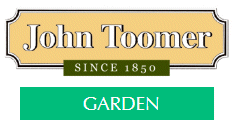Making Broadband FasterSarah Hill Wheeler looks at broadband and local developments that are attempting to speed up our internet access
However, for
some of us, superfast broadband remains a dream rather than reality. Sarah Hill Wheeler looks at broadband
and local developments.
Why we need broadband
We are no
longer simply surfing the internet for information. Increasingly, we download
videos from the web. We watch our favourite TV programmes and play games
online. More of us complete our tax returns electronically, study online, or
work remotely.
Without fast
internet access, these activities become laborious, if not impossible. Even the
casual web user may struggle with a slow connection. Websites have also become more
complex, assuming fast download speeds.
Those on
dial-up, or with slow connections, may simply find themselves timed-out.
How fast should your broadband be?
We use megabits per second (Mbps) to measure how quickly a connection can download information
from the internet.
Until a few
years ago, a 2 Mbps download speed was the common UK standard, (reflecting
Government pledges to achieve 100% broadband coverage at this speed by 2012).
In practical
terms, 2 Mbps remains a good yardstick. For example, you need a connection of
at least this speed to watch BBC iPlayer without interruptions.
As
technology advances, however, many users want more. Those sharing connections
simultaneously, downloading files or watching streamed content will need faster
connections. For example, to watch BBC iPlayer in HD (high definition) you need
a constant download speed of at least 3 Mbps.
Broadband in and around Swindon
Overall, Swindon
scored well in a recent Ofcom survey of broadband provision. Only 8% of homes
with broadband achieved speeds of less than 2 Mbps on average.
However, not
everyone is impressed. According to
cable.co.uk, provision remains “a little on the
patchy side.” In particular, slow spots exist on the western side of town, in
parts of Haydon, Cheney Manor, Peatmoor and West Leaze. Residents in Old Shaw,
for example, have reported broadband speeds of consistently less than 0.1Mbps,
not much faster than dial-up.
Rural and
outlying areas are also less likely to benefit from fast broadband speeds. Homes
in Sparcells, East Purton Stoke, Castle Eaton and Marston Meysey all report average
broadband speeds of less than 2 Mbps.
Improving broadband speeds
The channels
broadband uses are wider than dial-up. They allow more information to travel
through them. This increases the flow of data. However, there are limits.
Conventional
broadband, ADSL (asymmetrical digital subscriber line) still uses existing
telephone lines, usually made out of copper wires. Data passes through the line
as a series of electrical signals, before it is decoded. In theory, improving the
existing wiring allows those signals to pass more quickly. This should
translate into quicker download speeds.
Using fibre optics
Unfortunately,
there are inherent limitations in how quickly data can travel through copper
wire, particularly over longer distances. The further you are from your
exchange, the poorer, and slower, your connection is likely to be. In contrast,
cable, or fibre optic, lines transmit data much more quickly and reliably, facilitating
higher broadband speeds.
Providers, such as Virgin Media, are able to
offer superfast broadband connections through their existing cable
infrastructure. For example, a home in West Swindon, which receives speeds of
less than 1 Mbps using conventional broadband, may obtain download speeds of up
to 30 Mbps with fibre optics. The speed is impressive, but depends upon the
availability of a cable network.
Meanwhile,
Openreach BT is forging ahead with the rollout of its fibre optic programme.
It aims to be able to supply superfast broadband to two thirds of UK homes by the
end of spring 2014. Those areas benefitting should be able to expect speeds of
up to 45 Mbps.
Openreach’s
approach is twofold. First, it will lay fibre optic cables over the old copper
wires that lead from the exchange to its street cabinets. (Only the final
connection from your home to the cabinet will be through wire.) At the same
time, it will upgrade its electronics. (Miniaturised cards in local cabinets,
rather than the more remote exchange, will boost performance).
Secondly, it
will introduce a pure fibre infrastructure from individual properties to the exchange
(with optical splitters allowing a single fibre to serve multiple premises).
Developments in Swindon
Parts of
Swindon are already benefitting from BT’s improvements. Swindon has several telephone
exchanges (Swindon Central, Toothill, Stratton and Haydon Wick). Those areas
served by Swindon Central and Toothill should already be able to receive
superfast broadband through BT Infinity and other suppliers.
There are,
however, currently no plans to roll out the programme to Stratton or Haydon
Wick. Virgin media covers some, but not all, of the gaps left.
Residents in
Priory Vale, North Swindon, aren’t happy at being low down on BT’s list of
upgrade priorities. Homes there currently enjoy broadband speeds in the region
of 2-6 Mbps. These speeds are well above the old 2 Mbps standard, but considerably less than homeowners and businesses to
the south can expect. Justin Tomlinson MP has taken up their case with BT.
Introducing 4G
Using fibre
optics is not the only way to increase dramatically broadband speeds. Swindon
Council recently backed the introduction of Britain’s first 4G LTE (“long term
evolution”) wireless network through its partner, UK Broadband.
4G is a
combination of fourth generation mobile technologies. It does not rely upon
copper wires or cable to transmit information. Instead, it sends and receives
data in packets, from cell to cell, using radio waves.
Through the
partnership, 67,000 Swindon residents should be able to enjoy download speeds
of up to 40 Mbps, if they sign up for
a package with UK Broadband.
Developments in rural
areas
Rural
exchanges serve proportionately fewer properties, so are often a lower priority
for upgrading. However, their geographical reach is often greater. Given the
problems with connectivity over longer distances, rural homes and businesses
may suffer slow broadband speeds disproportionately.
However,
improvements are on the way.
Wiltshire County Council and South Gloucestershire County
Council have recently joined with BT to improve broadband provision for rural
areas that would otherwise not be able to access fast broadband.
By March 2016,
all premises in the County should be able to enjoy download speeds of at least
2 Mbps, most considerably more.
Check out your broadband speed
You can
check out your own broadband speed at
www.speedtest.net. For more information on broadband
provision, visit
Sam Knows.
|
|
||||||||
|
EATING OUT: The Faces Behind The Places |
||||||||
|
Tyres Slashed! |
||||||||
|
Council Leader Steps Down |
||||||||
|
||||||||
|
||||||||











